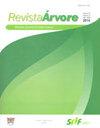RELATIONSHIPS BETWEEN AVIAN DIVERSITY AND AGRICULTURAL LANDSCAPE HETEROGENEITY
IF 0.8
4区 农林科学
Q4 FORESTRY
引用次数: 1
Abstract
ABSTRACT Studies on birds and their habitats are usually conducted in natural areas (protected areas, forests, wetlands, etc.). In this study, the relationship between agricultural landscape diversity and the species diversity of birds was investigated in an agricultural zone surrounded by natural and forested areas. Observations were carried out in 60 sample grid squares. Presence/absence data for birds and cultivated plants at each sample site were recorded. The Shannon-Wiener diversity index for bird species and landscape metrics for agricultural areas were used in the sample site. A multiple linear regression analysis was performed to explain the correlation between agricultural landscape diversity and bird species diversity. According to the results, the area-weighted mean shape index (AWMSI) and the number of patches (NP) were found to be particularly effective at predicting bird species diversity (R2 = 0.66). In addition, as the patch number and patch shape ratio increased in a sample area, the diversity of bird species (R = 0.83) expanded. It can be concluded that agricultural zones consisting of small, different patches are rich areas for bird species diversity. Bird species diversity is lessened in agricultural areas with uniform or similar landscape structures consisting of large patches. If the NP in the area is high, but not distributed in a mosaic pattern, then the diversity of bird species is considered weak. Despite the increasing NP and patch types, bird species diversity declines if there is intense human activity in the area.鸟类多样性与农业景观异质性的关系
对鸟类及其栖息地的研究通常在自然区域(保护区、森林、湿地等)进行。在自然和森林环抱的农业区,研究了农业景观多样性与鸟类物种多样性的关系。在60个样本方格中进行了观察。记录了每个样点鸟类和栽培植物的存在/缺失数据。在样地采用鸟类Shannon-Wiener多样性指数和农区景观指数。采用多元线性回归分析解释了农业景观多样性与鸟类物种多样性之间的相关性。结果表明,面积加权平均形状指数(AWMSI)和斑块数(NP)在预测鸟类物种多样性方面效果显著(R2 = 0.66)。此外,随着样区斑块数量和斑块形状比的增加,鸟类物种多样性呈扩大趋势(R = 0.83)。由不同小块组成的农业区是鸟类物种多样性丰富的地区。在具有均匀或相似景观结构的大斑块农业区,鸟类物种多样性减少。如果该地区的NP值较高,但不呈马赛克分布,则认为该地区鸟类多样性较弱。尽管NP和斑块类型增加,但如果人类活动强烈,鸟类物种多样性会下降。
本文章由计算机程序翻译,如有差异,请以英文原文为准。
求助全文
约1分钟内获得全文
求助全文
来源期刊

Revista Arvore
FORESTRY-
CiteScore
1.00
自引率
0.00%
发文量
32
审稿时长
4-8 weeks
期刊介绍:
A Revista Árvore é um veículo de comunicação científica da Sociedade de Investigações Florestais – SIF. O jornal é de acesso gratuito, revisado por pares, que publica bimestralmente trabalhos científicos originais no campo da Ciência Florestal. As áreas temáticas para publicação são: Ambiência e Conservação da Natureza, Manejo Florestal, Silvicultura e Tecnologia da Madeira e Utilização de Produtos Florestais.
A política editorial visa manter alta conduta ética em relação à publicação e aos seus funcionários, rigor na qualidade dos artigos científicos, seleção de revisores qualificados, respeito profissional aos autores e processo de tomada de decisão imparcial. A Revista Árvore publica artigos apenas em inglês.
Artigos de revisão podem ser publicados se houver uma discussão relevante resumindo o estado da arte sobre o assunto. A revisão estrita da literatura não é aceita.
 求助内容:
求助内容: 应助结果提醒方式:
应助结果提醒方式:


